A short-tailed chunky little bird wearing a highly unique striolated vest of red and white.
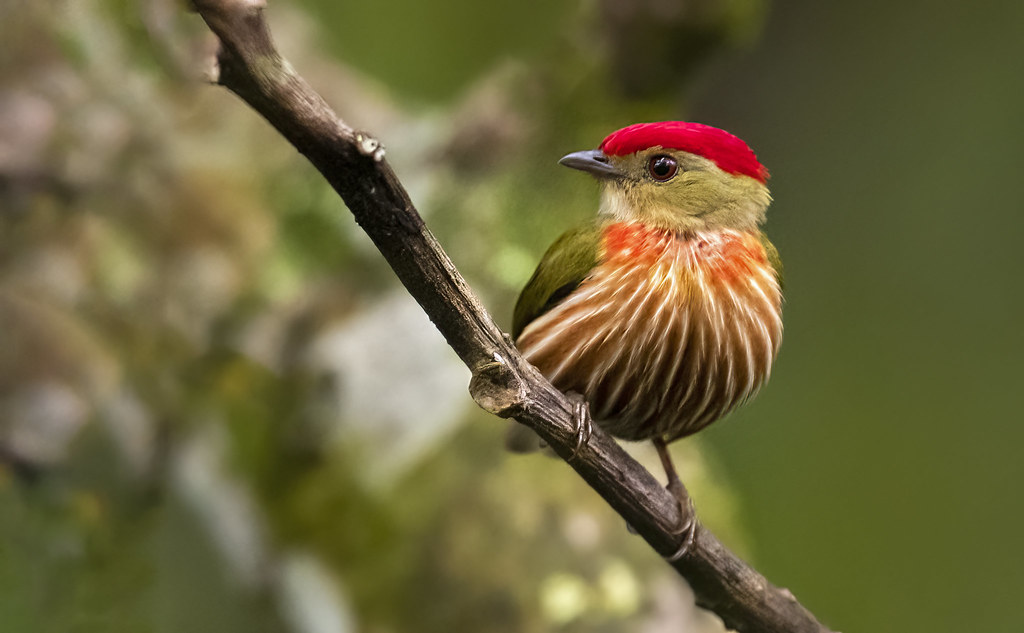
The striolated manakin or western striped manakin (Machaeropterus striolatus) is a species of bird in the Pipridae family. The male is olive above, with a red cap and nape, his secondaries are stiffened and enlarged with white tips. His tail is also stiffened. Most of the underparts are heavily striped with a red broken band on the upper breast. The tail is light gray.
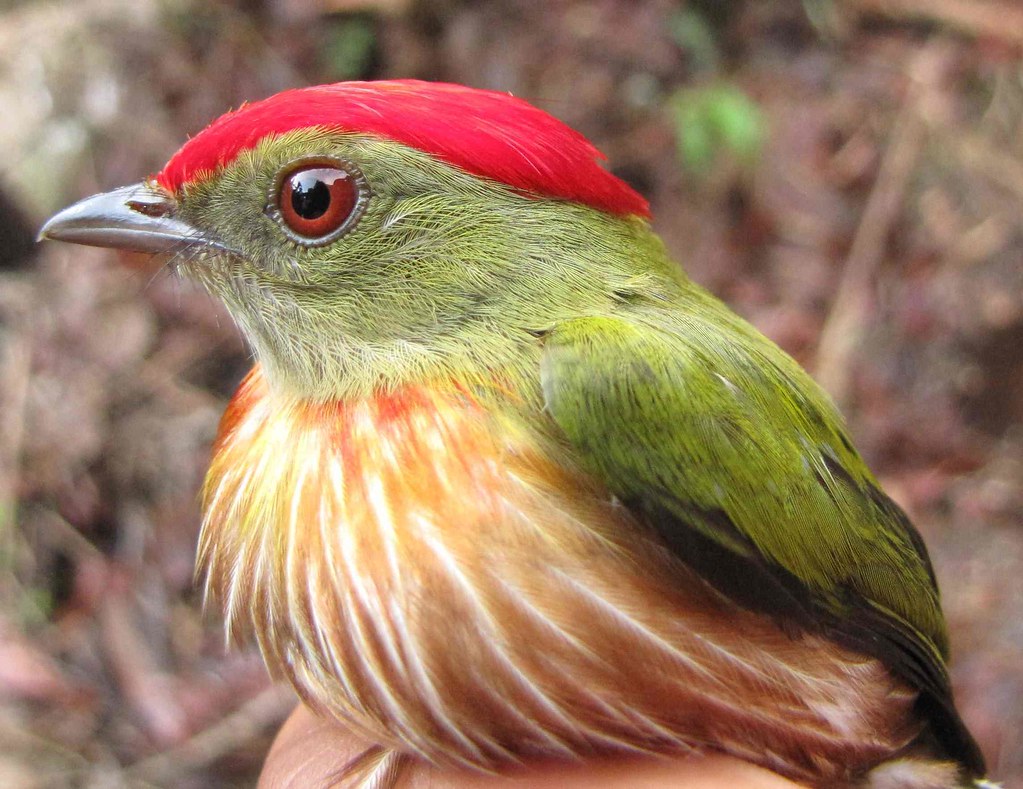
The female is entirely olive above, dingy whitish below, breast and sides pale olive with fine whitish streaks, breast side is tinged brownish.
She also lacks the male’s red crown.
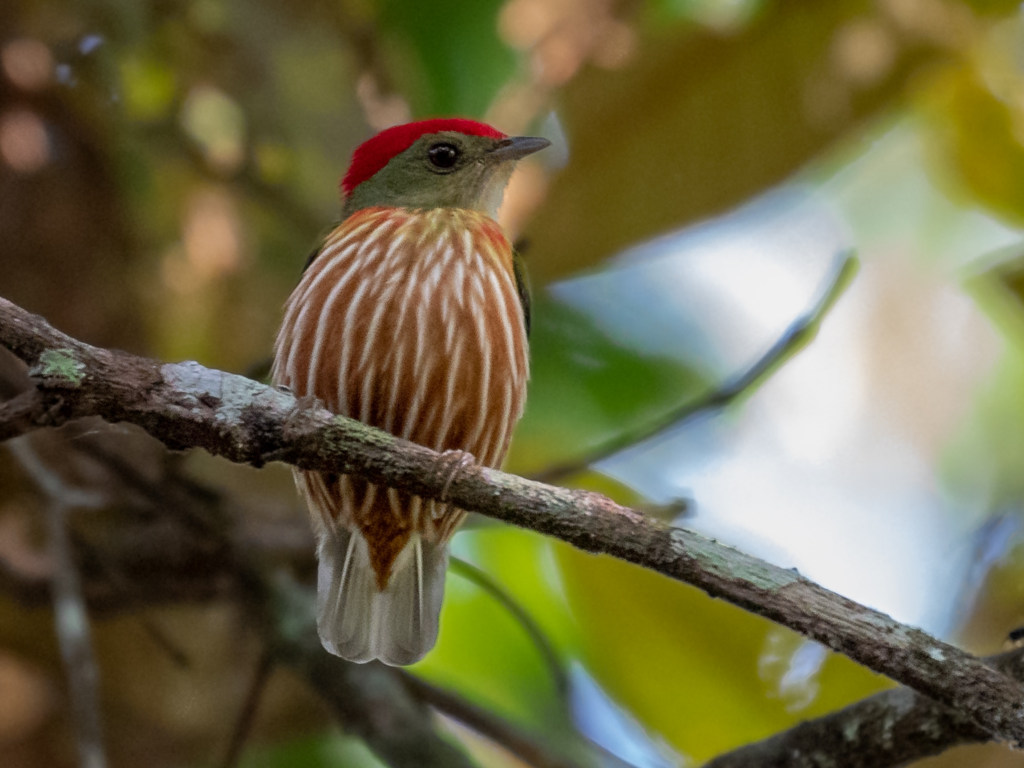
Hector Bottai is licensed under CC BY-SA 4.0.
The Striolated Manakin is confined to western and northern South America, from northern Peru and western Brazil, through eastern Ecuador and Colombia, north to western Venezuela, and east to the Tepui region of southern Venezuela, with a single, 19th-century specimen, recorded in western Guyana.

These birds like to inhabit the lower and mid strata in humid forest, especially terra firma, mature secondary woodland, sometimes venturing out to forest edges.
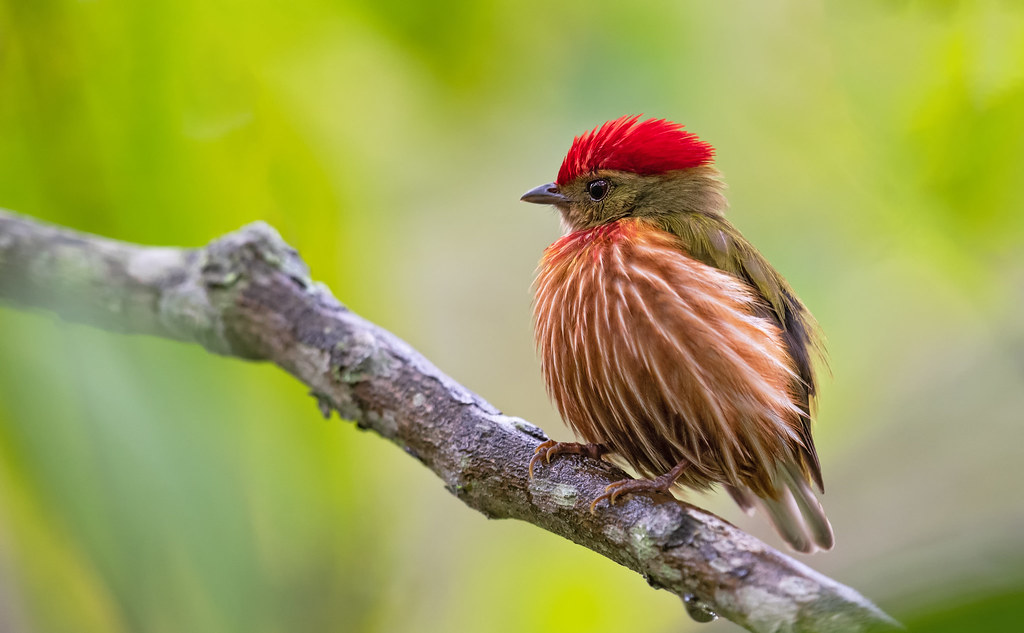
Their main diet consists of fruit, but they also take insects that are caught in flight on fast fliting forays.
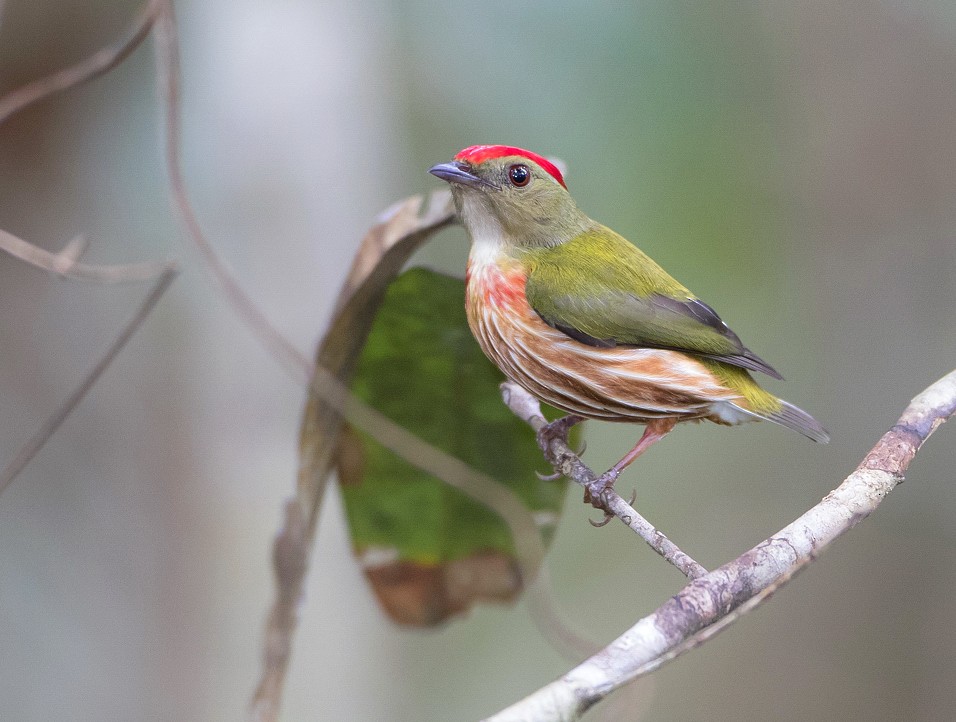
Like all manakins, males are divorced from all nesting duties; they display in exploded leks, wherein the different individuals (usually no more than three, occasionally as many as 11) are within earshot but not in sight of each other, usually sited atop low hills. Each male possesses a number of favored perches, from which the bird calls intermittently throughout the day, but switches to making a series of short vertical jumps, each one accompanied by vibrating wing movements (employing the modified secondaries) and insect-like buzzing notes if a female should appear at the lek site. The females alone are responsible for rearing the chicks. There is little other information available information.
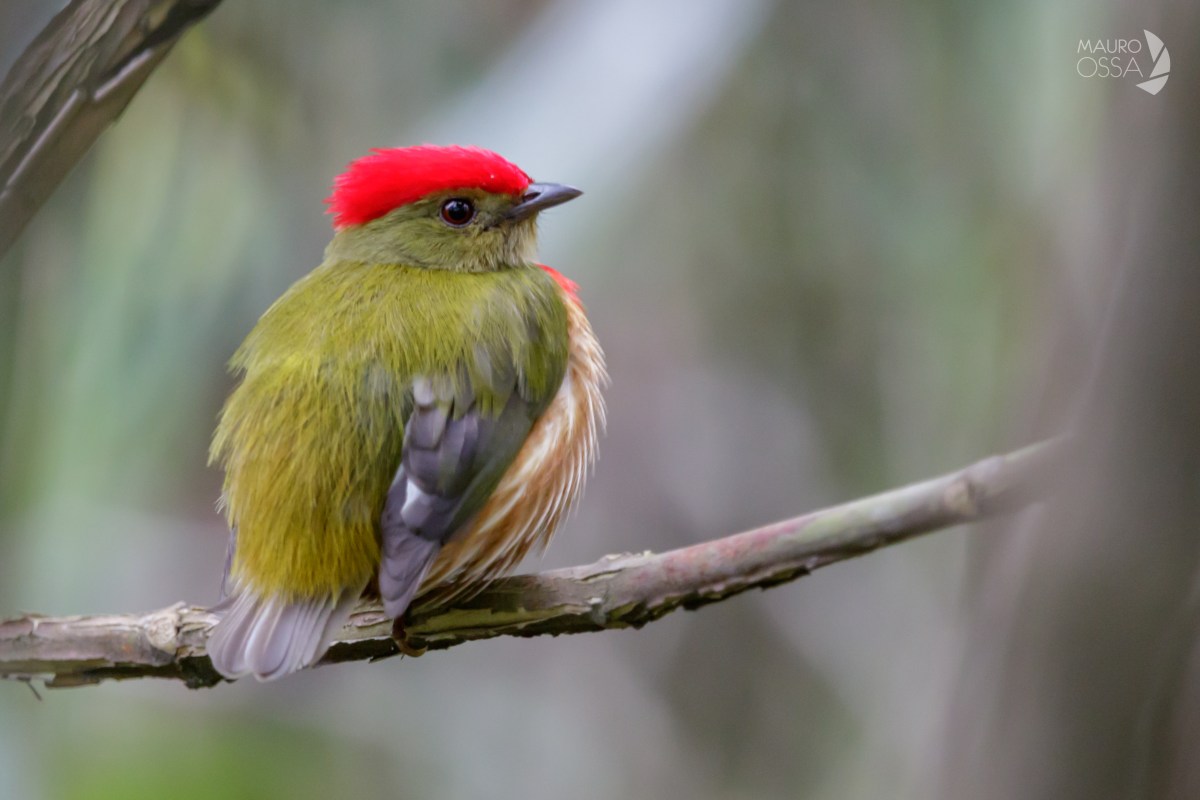
This bird is regarded as of Least Concern on the IUCN red list.
You can watch and listen to this bird right here below:




